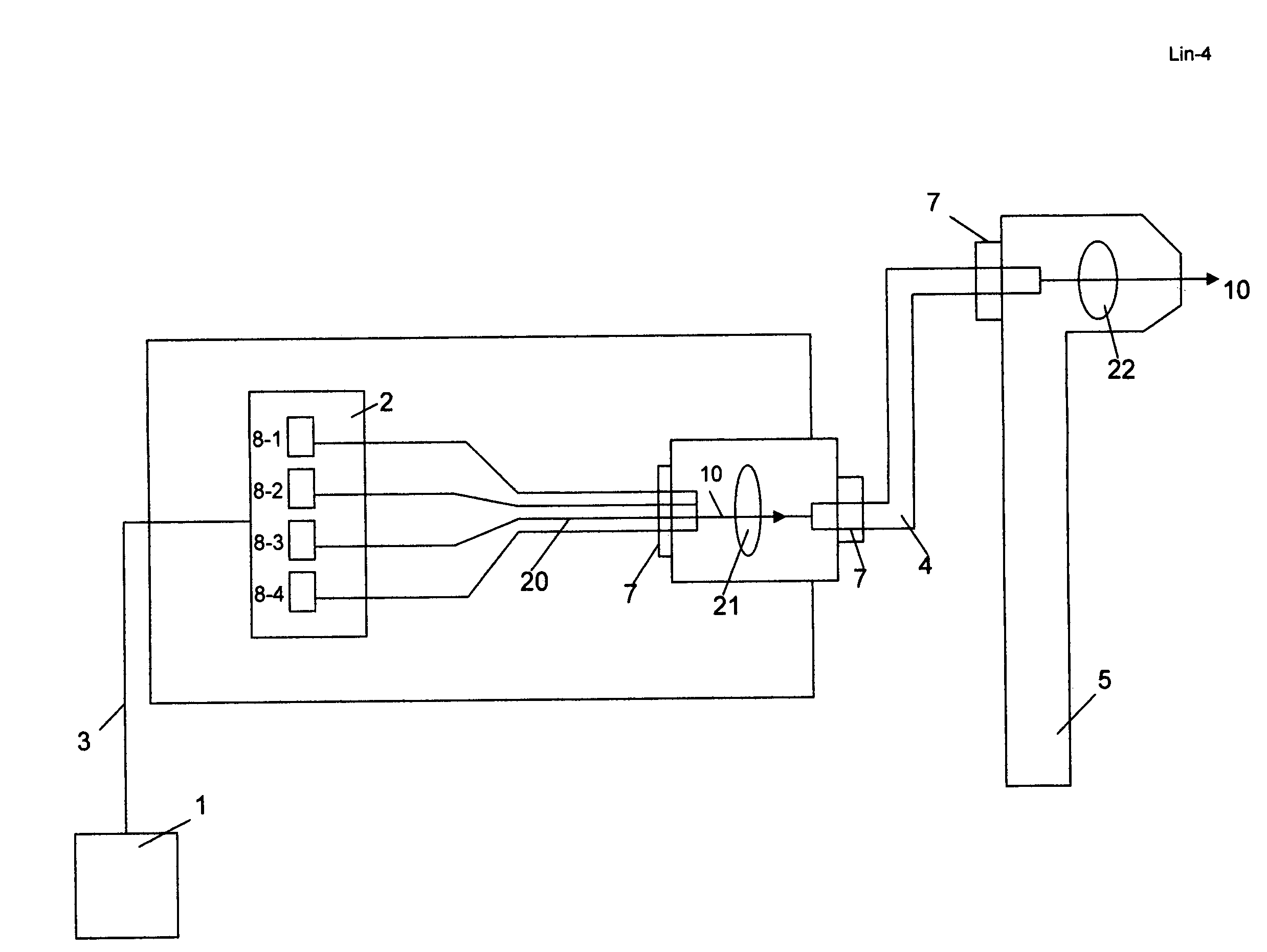Compact laser device and method for hair removal
a laser device and compact technology, applied in the field of laser devices and hair removal, can solve the problems of not being able to optimize for different skin types or hair color, and not being able to meet the needs of patients
- Summary
- Abstract
- Description
- Claims
- Application Information
AI Technical Summary
Benefits of technology
Problems solved by technology
Method used
Image
Examples
Embodiment Construction
[0020] The structure of hair is known as follows. It comprises of a shaft and a root which are enclosed by follicle. Located at the lower end of follicle is the papilla which is fed by blood vessels and provides nourishment to root. The main component of hair of all colors is the protein keratin. Therefore, in order to effectively and permanently prevent re-growth of hair, the papilla, blood vessels, hair shaft, or a combination of them, must be significantly damaged. Prior arts using ruby laser (at 694 nm) has good penetration due to low melanin absorption, however, it has poor blood (or oxy-hemoglobin) absorption. Prior arts using pulsed dye lasers (at 577 to 585 nm) are well absorbed by hemoglobin (Hb or HbO), but also have very high melanin absorption which prevents its energy deep into the hair papilla, which is about 3 to 10 mm, mostly 4 to 6 mm, skin depth.
[0021] Prior arts using Alexandrite (at about 755 nm) has a peak Hb absorption and relatively low (comparing to ruby las...
PUM
 Login to View More
Login to View More Abstract
Description
Claims
Application Information
 Login to View More
Login to View More - R&D
- Intellectual Property
- Life Sciences
- Materials
- Tech Scout
- Unparalleled Data Quality
- Higher Quality Content
- 60% Fewer Hallucinations
Browse by: Latest US Patents, China's latest patents, Technical Efficacy Thesaurus, Application Domain, Technology Topic, Popular Technical Reports.
© 2025 PatSnap. All rights reserved.Legal|Privacy policy|Modern Slavery Act Transparency Statement|Sitemap|About US| Contact US: help@patsnap.com



